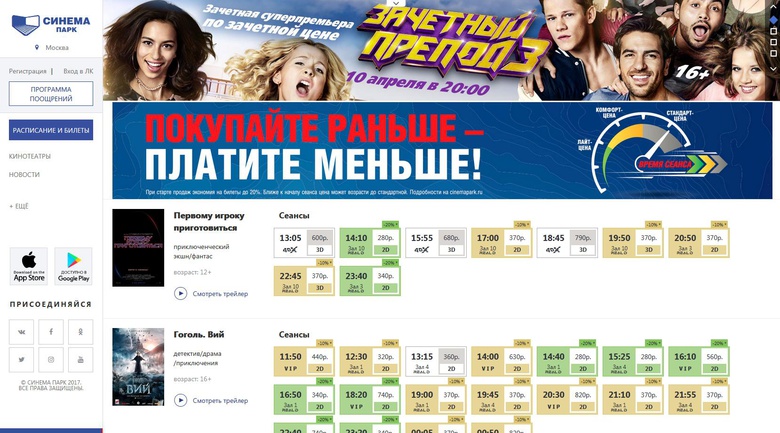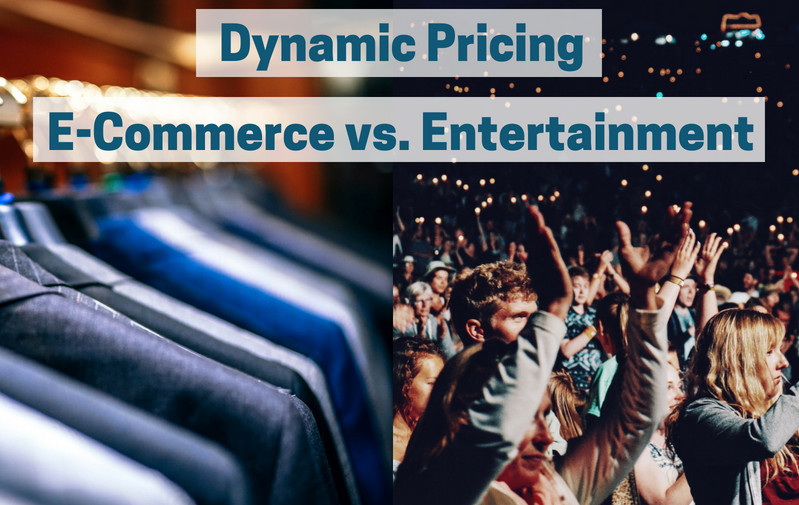The main goal for companies in the cinema, event and sports industries is to maximize profits from tickets. Additionally, they want to sell as many tickets for their venues and shows as possible. Dynamic Pricing in retail has the goal to maximize profit as well.
However, not every show and venue offers the same value to customers. Cinemas and theaters have many options to differentiate. Flexible pricing models, often called dynamic pricing, help to balance out demand and utilize resources most efficiently. They aim to achieve the desired revenue optimization.
In the business world the term “Dynamic Pricing” plays a vital role for many businesses, but is understood differently. This sparks confusion about the actual meaning and application of dynamic pricing in entertainment.
Dynamic pricing in retail causes price discrimination, which in turn, can lead to dissatisfaction
Dynamic pricing models are well-known for being applied in the e-commerce and online retail sector. The idea behind the flexible prices is to get the full potential out of a customer’s willingness to pay for a specific product. As a result, every customer might see a different price for the same product. Online shops can adjust the prices based on previous online search behavior. This reveals the demand for the product to some extent.
The criteria for dynamic pricing can range from group segmentation to very detailed information of each customer. There are basically hundreds of parameters that can be used to identify a user.
For example, person A searches for new headphones in his favorite online shop. The website realizes he is a frequent visitor and displays the regular price of 50€. Person B is searching for the same headphones on the same website, but sees a price of 45€. According to his browsing history, person B is a new customer on the website. Hence, the visitor will see a lower price in order to lure him to becoming a new customer. We all have come across this situation while searching online. There is a risk for online retailers to create dissatisfaction and dis-loyalty.
It is important to point out that dynamic pricing models for e-commerce work differently than those in entertainment.
The traditional model of dynamic pricing let the customer choose between different price options
Dynamic pricing in entertainment usually switches prices for all clients, based on actual and predicted supply and demand. A very common example for dynamic pricing in venues are early-bird discounts for tickets. These discounts are given to all customers that are buying ahead of time. Also, online sales might be more attractive than at the box office. Therefore, dynamic pricing in entertainment is not repricing according to individual willingness to pay.
Going back to the example. Now person A and person B are looking for a ticket online for a big sport game next weekend. Both see the same price of 50€ on the website. Person A decides to buy the ticket now. Person B waits until one day before the event and looks on the website again. The price for the ticket now is 60€. The price changed because most tickets are already sold out.
For this reason, dynamic pricing in entertainment provides customers the choice. Customers actively have control over the ticket price. The basic idea is to provide customers the choice and clearly advertise the “rules of the game”. For example, purchase your ticket online and 20 days prior an event to save money.
The dynamic pricing model considers expected demand of the event. The demand for a ticket will likely depend on the type of event, time of event, weather, season, etc. Past attendance data about previous similar events and forecasted metrics, like the weather, enable a very accurate prediction of demand.
Using ticketing data and transparent communication, companies can increase their revenue.
Example of dynamic pricing at the Russian cinema chain Cinema Park Formula Kino

Cinema Park Pricing
Source: Cinema Park Formula Kino
The dynamic pricing system at Cinema Park Formula Kino gives a good overview of the dynamic pricing model. The price for movies is different based on the expected demand for the show. Every customer has to pay the higher price for a high demanded movie. Furthermore, every customer gets a 20% discount when booking the ticket early.
To sum it up, customers can choose between several price segments based on the time of booking and expected demand. As a result, the system creates a true win-win situation for customers and exhibitors. Customers are able to benefit from attractive prices in certain price segments, especially at off-peak times. They are rewarded for booking their tickets in advance. Exhibitors achieve higher revenues and online shares in ticket sales.
About Smart Pricer
Smart Pricer’s team of pricing experts provides entertainment venues around the globe with necessary tools to increase ticketing revenues. We have over 10 years of airline pricing experience and done millions of pricing optimizations. Hence, we are the go-to-partner for many partners such as Europe’s largest cinema chain and Odeon-UCI.
Smart Pricer continues to help companies achieve an increase in ticketing revenues by +5-15% while enhancing visitor satisfaction. For more information please visit our entertainment page.

